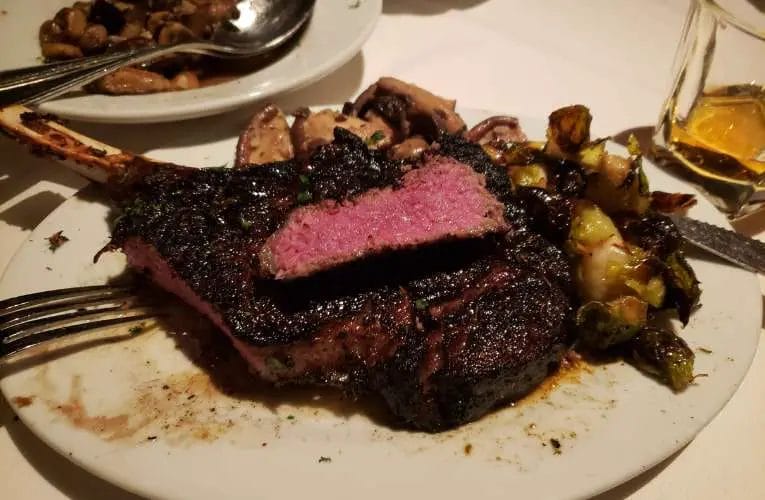Looking to master the art of cooking a mouthwatering Pittsburgh steak? Look no further! In this comprehensive guide, we’ll walk you through step-by-step instructions to achieve the perfect seared exterior and tender, juicy interior that this iconic steak is known for.
From selecting the right cut of meat to seasoning and cooking techniques, we’ll cover it all. Be prepared to impress your family and friends with this classic Pittsburgh specialty that boasts a delicious crust and unbeatable flavor.
So, roll up your sleeves, fire up the grill or heat up the cast-iron skillet, and get ready to elevate your steak game to a whole new level. Let’s dive in and discover the secrets to cooking a Pittsburgh steak like a pro!
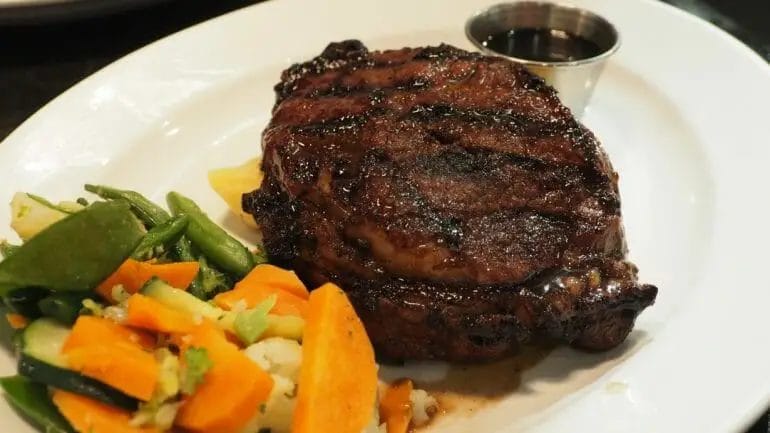
The Best Seasonings for a Juicy and Flavorful Pittsburgh Steak
When it comes to enjoying a mouthwatering steak in Pittsburgh, the key lies not only in selecting a high-quality cut of meat but also in choosing the perfect seasonings.
The right combination of flavors can elevate a steak from good to absolutely unforgettable. In this section, we will explore some of the best seasonings that will help you achieve a juicy and flavorful Pittsburgh steak that will leave your taste buds begging for more.
1. Salt and Pepper
While it may seem simple, the classic combination of salt and pepper is a timeless choice for seasoning a steak.
The key is to generously coat both sides of the steak with a coarse salt, such as kosher salt, and freshly ground black pepper. This simple seasoning allows the natural flavors of the meat to shine through while enhancing the overall taste.
2. Garlic and Herb Rub
For those who crave a more aromatic and herbaceous flavor profile, a garlic and herb rub is an excellent choice. This seasoning blend typically includes ingredients such as minced garlic, dried herbs like rosemary, thyme, and oregano, as well as a touch of olive oil.
The rub is applied to the steak, allowing the flavors to infuse into the meat during the cooking process, resulting in a flavorful and tender steak.
3. Montreal Steak Seasoning
If you’re looking to add a bold and savory flavor to your Pittsburgh steak, Montreal steak seasoning is a fantastic option. This popular blend typically includes a mix of spices like garlic, onion, black pepper, coriander, and dill, among others.
The coarse texture of the seasoning helps create a crust on the steak, sealing in the juices and adding a mouthwatering charred flavor.
4. Chimichurri Sauce
For those who prefer a tangy and herbaceous flavor profile, chimichurri sauce is a wonderful choice. This traditional Argentinean sauce is made with fresh herbs such as parsley and cilantro, garlic, red wine vinegar, olive oil, and a hint of chili pepper.
The sauce can be used both as a marinade before grilling the steak and as a flavorful topping after it’s cooked. The bright and vibrant flavors of chimichurri complement the rich and juicy steak perfectly.
5. Cajun Seasoning
If you’re in the mood for some spicy and flavorful heat, Cajun seasoning is an excellent option. This blend typically includes a mix of herbs and spices like paprika, cayenne pepper, garlic powder, thyme, and oregano.
The bold and robust flavors of Cajun seasoning can add a delicious kick to your Pittsburgh steak, making it a favorite choice for those who enjoy a bit of heat.
6. Worcestershire Sauce Marinade
For a steak with a rich and savory flavor, a Worcestershire sauce marinade can work wonders. This classic marinade is made with Worcestershire sauce, soy sauce, garlic, and a touch of brown sugar for a hint of sweetness.
The steak is marinated in the mixture for a few hours or overnight, allowing the flavors to penetrate the meat and create a juicy and flavorful result.
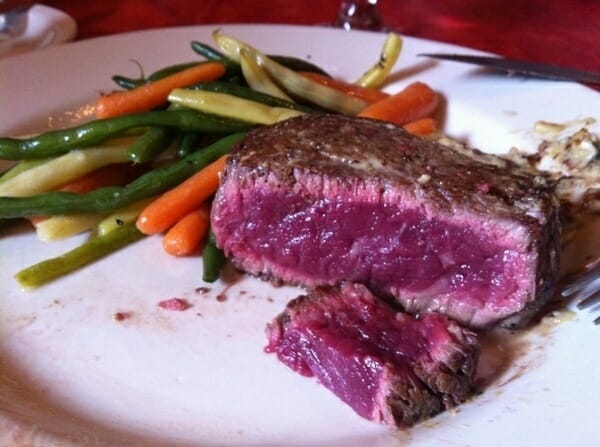
Mastering the Art of Searing: Techniques for a Crispy Outer Crust
When it comes to cooking meat, achieving a crispy outer crust is a desirable goal for many chefs and home cooks alike. The process of searing not only enhances the flavor and appearance of the meat, but it also helps to seal in the juices, resulting in a juicy and tender final product.
In this section, we will explore various techniques that will help you master the art of searing and achieve that coveted crispy outer crust.
1. Preparing the Meat
Before you begin the searing process, it is essential to properly prepare the meat. Start by choosing the right cut of meat. Cuts that have a decent amount of fat marbling and are evenly thick are ideal for searing.
Additionally, make sure to bring the meat to room temperature before cooking, as this will ensure even cooking throughout.
2. Proper Heat and Oil Selection
The key to a successful sear is using the right heat and oil. Heat a heavy-bottomed skillet or a cast-iron pan over medium-high to high heat. You want the pan to be hot enough to create a sizzling sound when the meat hits the surface.
As for the oil, choose oils with a high smoke point, such as canola or avocado oil, as they can withstand the high temperatures required for searing without burning.
3. Dry and Season the Meat
Before searing, pat the meat dry with a paper towel. Moisture on the surface of the meat can interfere with the searing process.
Once the meat is dry, season it generously with salt and pepper, or any other desired seasonings. The seasoning will not only enhance the flavor but also create a beautiful crust on the meat.
4. Timing and Technique
When searing meat, it is crucial to get the timing and technique right. Place the meat in the hot pan and let it sear undisturbed for a few minutes. Avoid overcrowding the pan, as this will lower the temperature and prevent proper searing.
Use tongs to flip the meat once it has developed a golden brown crust. Repeat the process on the other side, taking care not to overcook the meat.
5. Resting and Serving
Once the meat is seared to perfection, remove it from the pan and let it rest for a few minutes. Resting allows the juices to redistribute, resulting in a more tender and flavorful end product.
After the resting period, slice the meat against the grain to ensure maximum tenderness. Serve immediately and enjoy the crispy outer crust that you have successfully achieved through the art of searing.
Mastering the art of searing and achieving a crispy outer crust is a skill that can elevate your cooking to new heights.
By following these techniques and practicing regularly, you will soon become a searing expert and impress your family and friends with perfectly seared meats that are bursting with flavor and texture. Happy cooking!
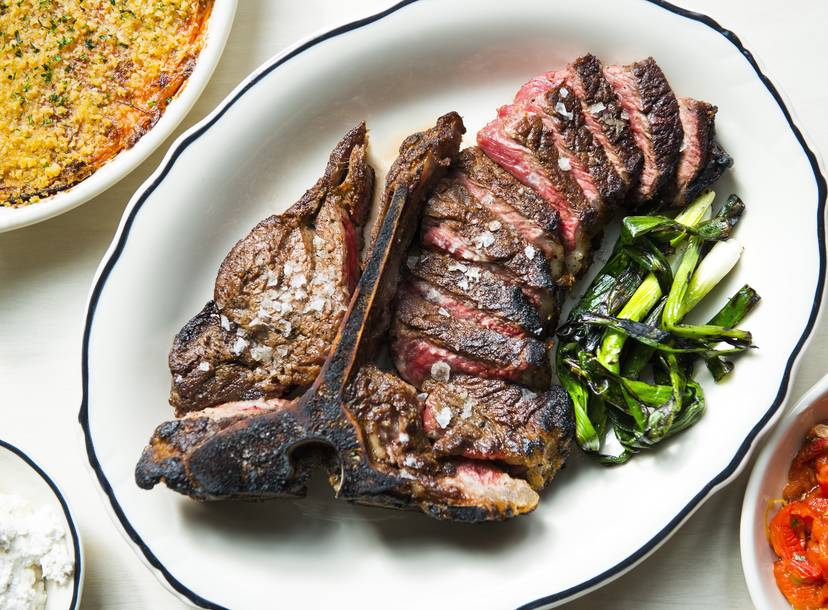
Grilling vs. Broiling: Choosing the Best Cooking Method for Your Pittsburgh Steak
When it comes to cooking a delicious Pittsburgh steak, two popular methods that many people swear by are grilling and broiling. Both techniques have their own unique advantages and can result in a mouthwatering steak.
But how do you decide which method is the best for your steak? Let’s take a closer look at grilling and broiling, and compare the two to help you make an informed decision.
Grilling
Grilling is a popular cooking method that involves applying direct heat to the surface of the steak. This is typically done using a grill, whether it’s a charcoal, gas, or electric grill. Grilling provides a smoky flavor and beautiful grill marks on the steak, giving it a delicious charred taste that many steak lovers enjoy.
One of the main advantages of grilling is the ability to control the temperature easily. You can adjust the heat by raising or lowering the grill grate, allowing you to achieve the desired level of doneness for your steak. Grilling also allows for more even cooking, as the heat is distributed evenly across the grill.
However, grilling requires some skill and attention. It’s important to monitor the steak closely to prevent burning or overcooking. You may also need to flip the steak halfway through cooking to ensure it’s cooked evenly on both sides.
Additionally, grilling is more suitable for thicker cuts of steak, as thinner cuts may dry out quickly.
Broiling
Broiling is another popular cooking method that involves exposing the steak to high heat from above. In this method, the steak is placed on a broiler pan or rack, and then positioned under the broiler in the oven. The intense heat quickly sears the steak, resulting in a flavorful crust and a juicy interior.
One of the advantages of broiling is the convenience. It doesn’t require an outdoor grill and can be done using a standard oven. Broiling is also a faster cooking method compared to grilling, as the heat is concentrated directly on the steak.
However, broiling may not provide the same smoky flavor and grill marks that grilling does. It’s also important to keep a close eye on the steak while broiling, as it can easily burn if left unattended.
Furthermore, broiling is best suited for thinner cuts of steak, as thicker cuts may not cook evenly under the intense heat.
Choosing the Best Method
So, which method is the best for your Pittsburgh steak? It ultimately depends on your personal preference and the type of steak you have. If you enjoy the smoky flavor and charred taste, grilling is a great option. It allows for more control over the cooking process and is ideal for thicker cuts of steak.
On the other hand, if you’re looking for a quicker cooking method that still delivers a flavorful result, broiling can be a good choice. It’s convenient and works well for thinner cuts. Just make sure to keep a close eye on the steak to avoid burning.
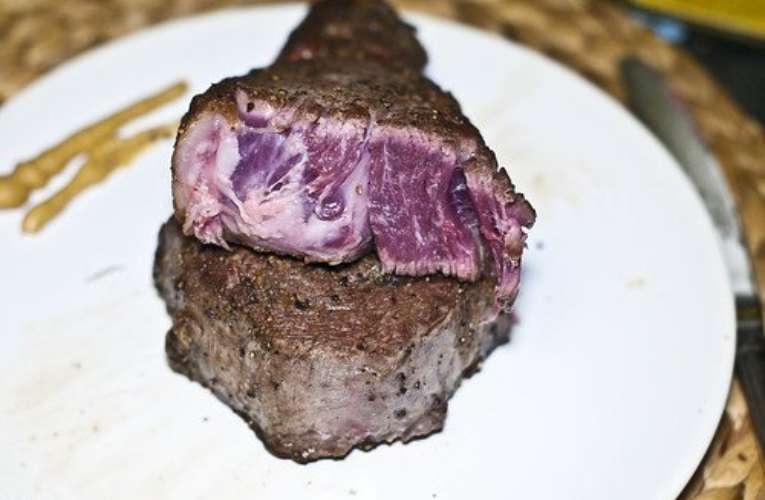
Pairing Your Pittsburgh Steak with Delicious Side Dishes: Ideas and Inspiration
When it comes to enjoying a mouthwatering Pittsburgh steak, choosing the right side dishes can elevate your dining experience to a whole new level. The perfect side dishes not only complement the flavors of the steak but also provide a variety of textures and flavors to create a well-rounded meal.
Whether you prefer traditional classics or experimental creations, we have gathered some ideas and inspiration to help you pair your Pittsburgh steak with delicious side dishes.
1. Classic Mashed Potatoes
No steak dinner is complete without a side of creamy, buttery mashed potatoes. This classic comfort food pairs perfectly with a juicy Pittsburgh steak.
The smooth texture and rich flavors of the potatoes provide a satisfying contrast to the robust flavors of the steak. You can add a twist by incorporating roasted garlic, Parmesan cheese, or chives into your mashed potatoes for an extra flavor boost.
2. Grilled Vegetables
For a lighter and healthier side dish option, consider grilling an assortment of colorful vegetables. The smoky char from the grill adds a delightful flavor to the vegetables, while their natural sweetness enhances the savory taste of the steak.
Some popular options include zucchini, bell peppers, asparagus, and eggplant. Drizzle them with olive oil, sprinkle with seasoning, and grill to perfection.
3. Creamed Spinach
If you’re looking for a side dish that adds a touch of elegance to your steak dinner, creamed spinach is an excellent choice.
The creamy and velvety texture of the spinach combined with the richness of the sauce adds a luxurious element to your meal. The earthy flavor of the spinach complements the bold flavors of the steak, creating a harmonious combination that is sure to impress.
4. Loaded Baked Potatoes
Take your baked potatoes to the next level by loading them with a variety of delicious toppings. Sour cream, crispy bacon, cheddar cheese, and chives are classic choices that add an explosion of flavors to your steak dinner.
The crispy skin of the potato provides a delightful contrast to the tender steak, creating a satisfying and indulgent meal.
5. Roasted Brussels Sprouts
For a side dish that is both flavorful and nutritious, try roasting Brussels sprouts. The caramelization that occurs during the roasting process brings out the natural sweetness of the sprouts, while also adding a crispy texture.
The slightly bitter taste of the Brussels sprouts pairs well with the rich flavors of the steak, creating a well-balanced and delicious combination.
6. Corn on the Cob
During the summer months, corn on the cob is a popular side dish that complements the juicy, grilled flavors of a Pittsburgh steak.
The sweetness of the corn kernels adds a refreshing element to the meal, while the charred bits from grilling enhance the overall taste. Slather some butter and sprinkle a dash of salt and pepper for a simple and satisfying side dish.
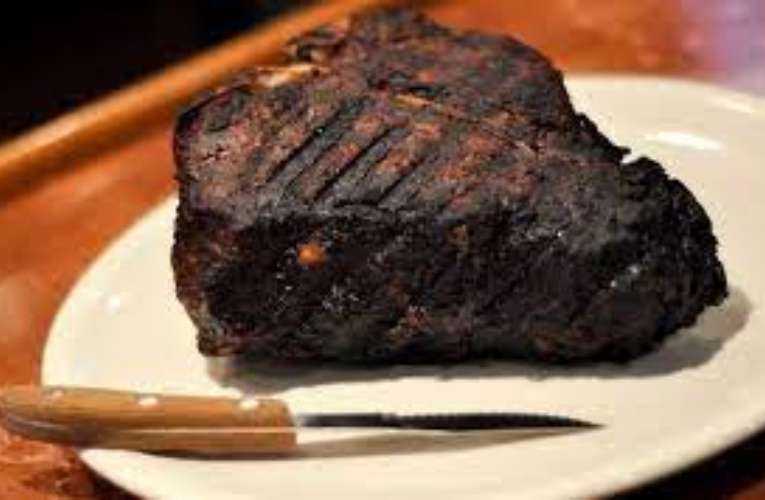
FAQs
1. How do I cook a Pittsburgh steak?
To cook a Pittsburgh steak, start by heating a cast-iron skillet over high heat until it smokes.
Season the steak with salt and pepper, and then sear it in the hot skillet for a couple of minutes on each side. Finish cooking in the oven until desired doneness is reached. Allow the steak to rest before serving.
2. What temperature should I cook a Pittsburgh steak to?
For a Pittsburgh steak, the internal temperature should be around 130°F (54°C) for medium-rare, or 145°F (63°C) for medium. Use a meat thermometer to ensure the steak reaches the desired level of doneness.
3. Can I cook a Pittsburgh steak on a grill?
Yes, you can cook a Pittsburgh steak on a grill as well. Preheat the grill to high heat and follow the same technique of searing the steak on high heat for a couple of minutes on each side. Then move the steak to a cooler part of the grill and finish cooking to the desired level of doneness.
Conclusion
In conclusion, cooking a Pittsburgh steak is a culinary delight that requires a few simple steps but yields incredible results. By following the proper techniques, you can achieve a mouthwatering, perfectly charred steak with a juicy and tender interior.
The key to a successful Pittsburgh steak lies in the high heat and quick cooking time, which creates a flavorful crust while keeping the center deliciously pink and succulent.
Mastering the art of searing and using the right seasonings will elevate your Pittsburgh steak to the next level. Whether you prefer a classic seasoning blend or experimenting with unique flavors, the possibilities are endless.
So fire up your grill or cast-iron skillet, gather your favorite ingredients, and prepare to indulge in a delectable Pittsburgh steak experience.

